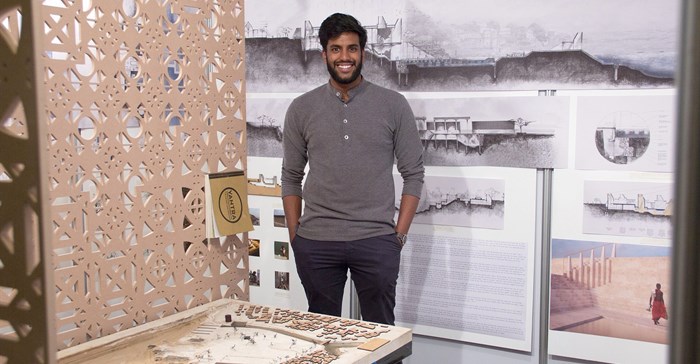
In the news
Winner of Corobrik Architectural Awards announced

Vedhant Maharaj’s winning dissertation, entitled Yantra, Infrastructure of the Sacred and Profane, exhibited critical elements that had been picked out by the judges – innovation and technical excellence expressed with a keen understanding of the combined social, economic and environmental context that is changing the approach to the built environment today.
“Innovation differentiates design resolutions and helps define architecture. Innovation in sync with context provides the delight factor permitting architectural design to compete comfortably on the world stage. Technical skill, the ability to create memorable form that draws one in while treading softly on our planet put the finishing touches to sustainable architecture,” said Corobrik managing director, Dirk Meyer.
He admitted that it had been a challenge to separate a winner from the eight regional finalists from the country’s major universities this year. These finalists won their respective regional awards during 2015 and went forward to compete for the national award.
Meyer said that all eight entries showed how innovation could blend with sustainability, social awareness and technical excellence. However, Maharaj’s offering illustrated how creativity could make an exceptional and meaningful contribution to South Africa’s diverse and multi-cultural landscape.
Rich architectural heritage of Varanasi
Responding to the announcement that Vedhant Maharaj had been presented with this year’s Corobrik Architectural Award, Dr. Mpho Matsipa, Maharaj’s co-supervisor said that, Yantra, explored water infrastructure provided water that was safe for human consumption while respecting the rich architectural heritage of Varanasi. “In so doing, he demonstrated both a nuanced and layered understanding of sustainability, technological and social innovation which encompasses daily spatial practices on the Ganges River, larger scale developmental processes in India, heritage in the built environment and everyday spatial practices as well as the complexities of religious plurality in India. Additionally, this thesis is rigorously researched, using both primary and secondary sources, with confidence and creativity.”
She said that Maharaj’s attention to questions of access for majority populations was both poetic and attentive to questions of social and spatial justice.
“The mastering of change of scale is exceptionally convincing: Yantra works as political argument down to the design of bricks in 1:1. He uses the language of tectonics as a tool to make the city into a space for a society of the collective, a rare yet highly needed ambition within our profession,” added co-supervisor, Kirsten Doermann.
Dr Matsipa concluded: “I believe that Vedhant demonstrates a lot of passion for thinking about the spatial, technological and ambient possibilities of infrastructure as culturally informed architecture. I would advise him to continue working and thinking across different scales and locations. I believe that he could become a leader in the field - specifically in terms of thinking about water architecture from the Global South.”











